

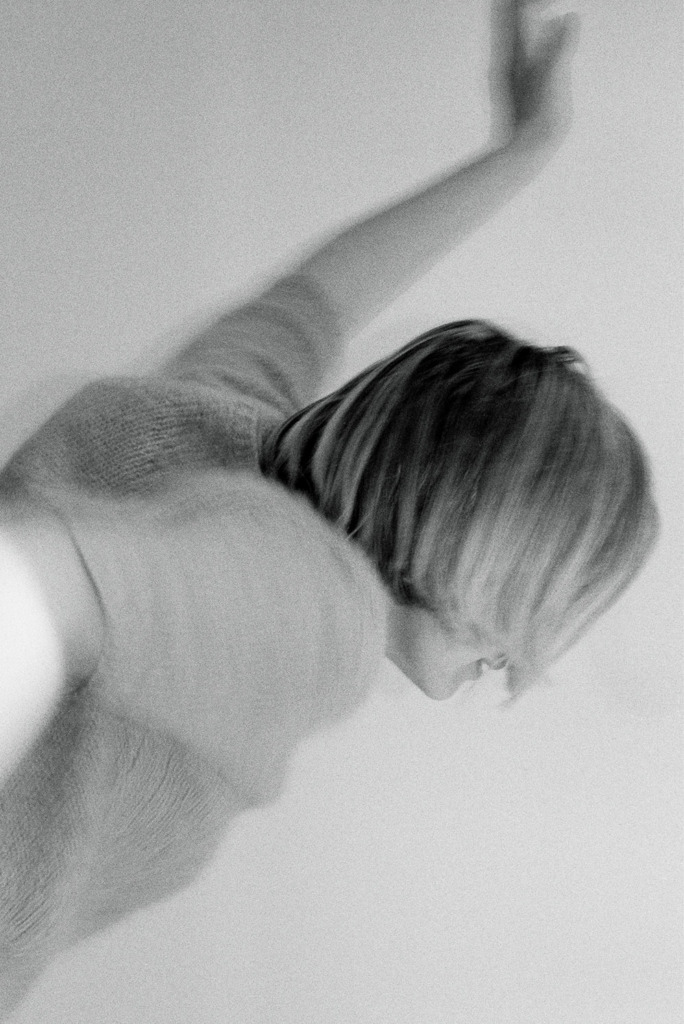
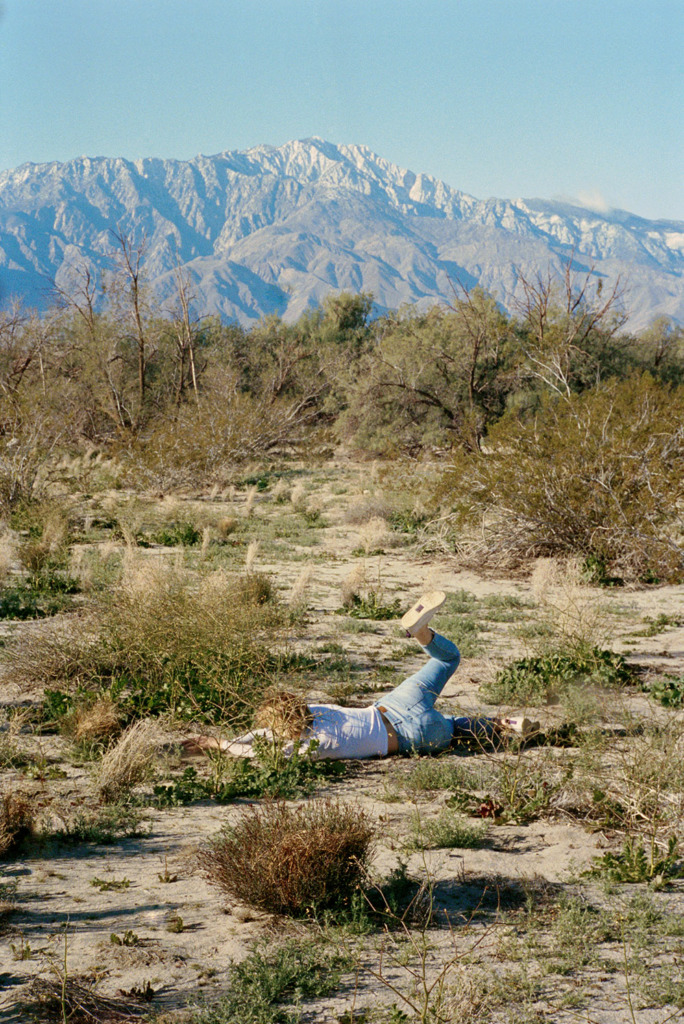


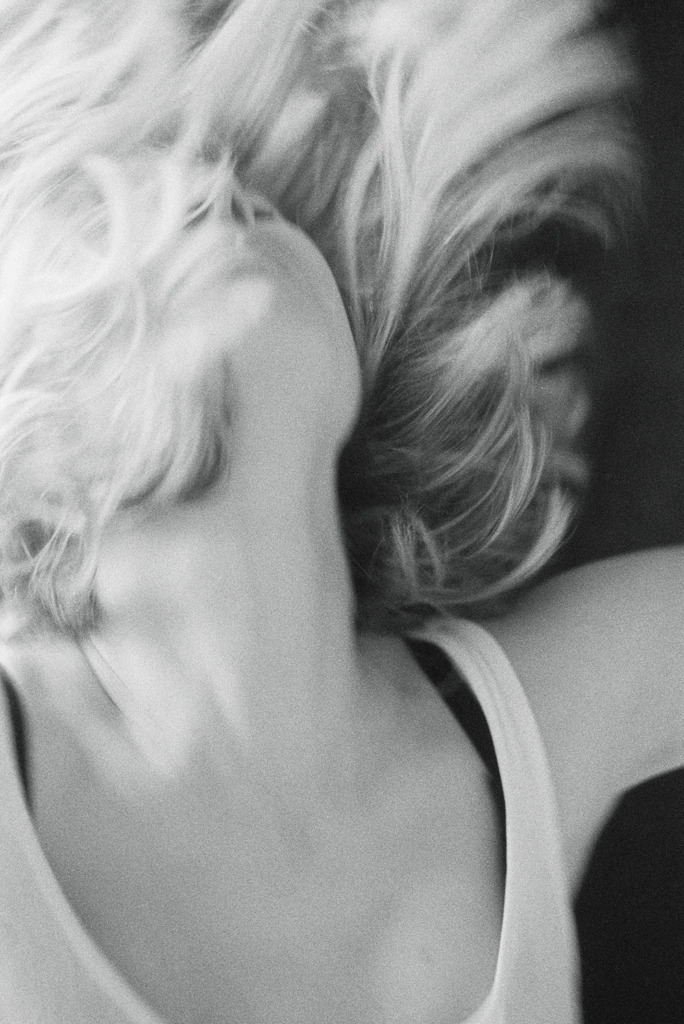
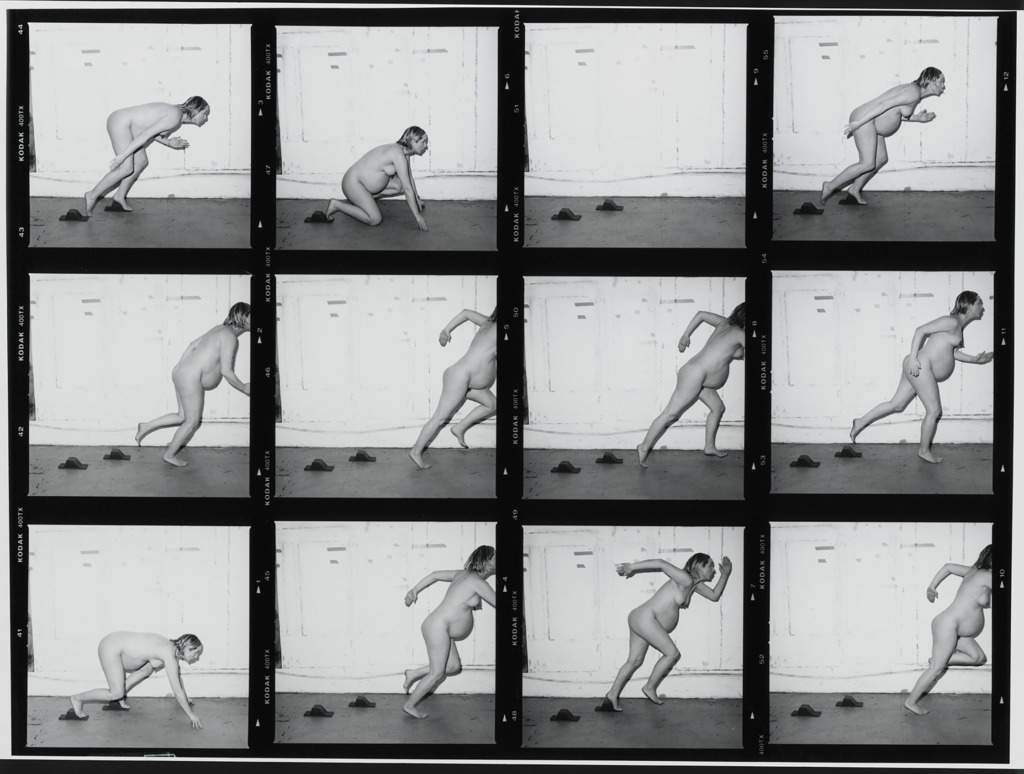

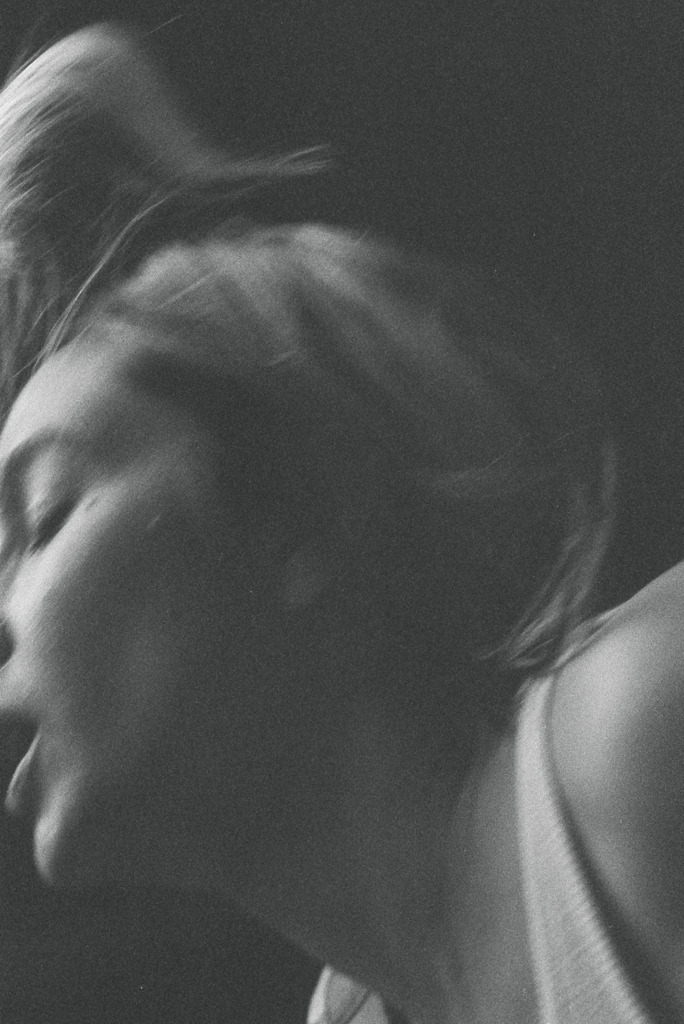



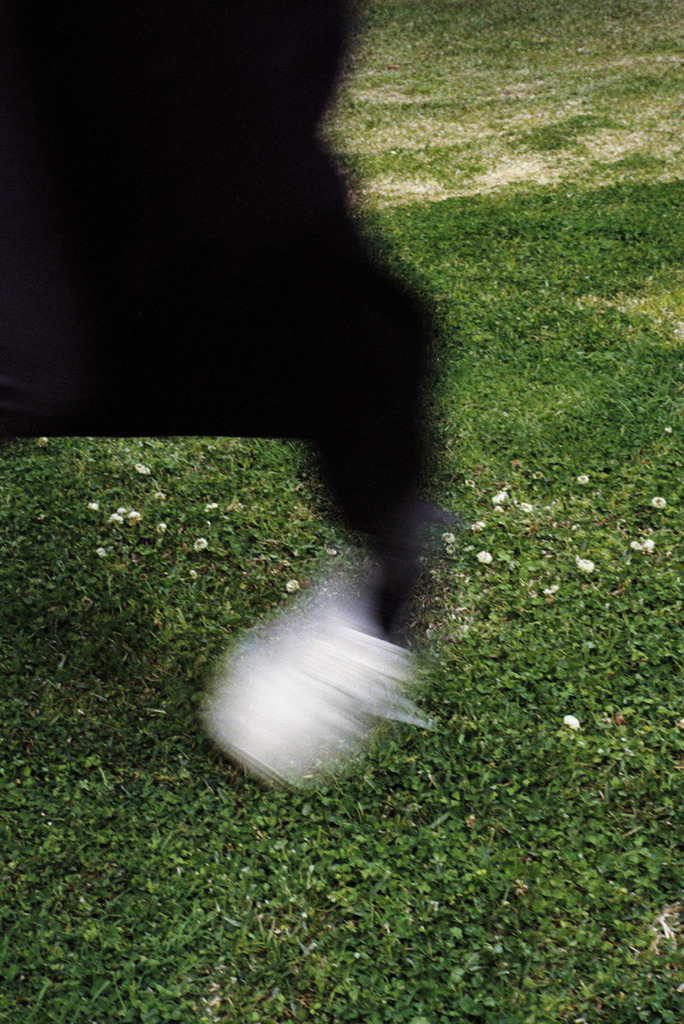
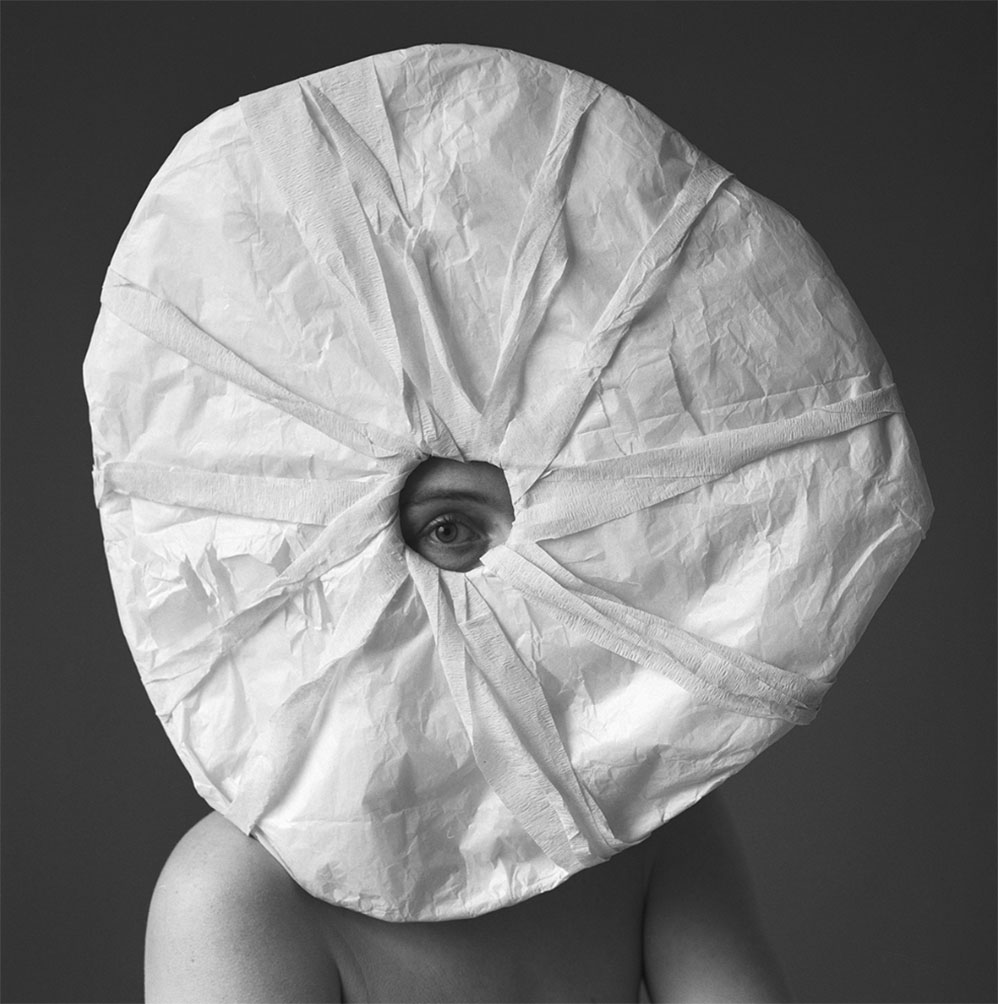


Photo Essay
Visualizing life’s pitfalls with photographer Gabby Laurent
To descend freely by the force of gravity, to move from a higher to a lower level, typically rapidly and without control, to leave an erect position suddenly and involuntarily. Enter the word falling and you’ll be given countless definitions along with more or less striking proof that something as physical and full of abandon can not be captured by words alone.
Sensitive to the limits of written language, photographer Gabby Laurent’s latest book, Falling, is a visual exploration of movement and control. The book was published in 2021 but continues to feel relevant as it deals with the experience of giving way to unforeseen forces and situations (love, gravity, pregnancy, loss, … ), by drawing on performance and self-portraiture.
In this photo-essay we asked Gabby to revisit her work of ‘performed choreography’. What was the process of reproducing and capturing involuntary movement? How does she feel looking back at these images that came out of a place of extreme emotions, grieving her father, and at the same time giving birth to her first child?
This Photo Essay is part of Movement, a series exploring creative projects that put motion and fluidity at the center.
“I wanted this work to be recognised and seen but I didn’t show it to anyone for a really long time, so I wasn’t actively putting it out into the world. I was just making it because it was something I wanted to do and had to do and it felt good to me. Making Falling, having that coercive body of work that was published, gave me confidence in my practice as a whole as well as giving me recognition from people.”
“Making Falling, I thought about the expression ‘falling from grace’ which traditionally had meant a woman losing her virtue. It had negative connotations for women. So that was always something I had in mind making the book.”
“I was making the work over four or five years, by the time the book was published.
I love repetition, a lot of my work is repetition. The signals that can be born in repetition are important. Turning a page is the best type of repetition there is.”
“There were lots of pictures of me falling in a landscape, or falling down stairs, falling in different situations, I also wanted to have visual breaks that felt more focused on a hand or a close up on a face; that felt calmer to me.
When you are zooming in on someone’s face and they are falling, it’s calmer visually, but there is also much more emotion in it. You can see the terror and the drama up close.”
“Looking at the work my editors wanted to include lots of images so we decided to include sequences. So rather than having one image from one set up, we would have 20. And that made it feel much more performance based. The edit changed the way I thought about the work. But the work for me was always trying to do the same thing, it was always about a lack of control, grief and letting go. I had to think about it more structurally.”
“My dad died whilst I was making the work and at that point the work became this cathartic thing for me. As an activity, as a project, it was something that was really helpful for me to be making at that time.”
“The work that is more centered on my face I made after Franca (Gabby’s first child) was born. By then I really resonated with the level of sadness of when a new born baby cries, I really recognised myself. As adults we don’t give over to that level of sadness. It was still about falling but at the same time about these extreme feelings.
I would see her throwing her body around and that felt important to the body of work, so I started using that. Birth and death were emotionally linked to me.”
“There is always recovery, you always come back up, whether it’s euphoria or sadness, everything changes, you’ll come back up and everything will be different again. Sometimes that’s a relief and sometimes that is an awful thing to know.”
“There’s this letter from Sol LeVitt to Eva Hesse where he starts by saying “Being yourself, I’m sure you hate every minute of it, but learn to let go once in a while.” and the whole letter goes on saying “just do”. If you just do, just come into the studio and make an effort of doing something, even if it’s a complete failure, it can lead to something else.”
“The book ends on these images, I didn’t realize at the time but this was the recovery. The rebound, the getting up. I got really obsessed with drawing pictures of people getting up. Subconsciously that must have been me on the way to recovery. Coming out the other side.”
“I still love Falling, it was really important for me to make, but now I feel invested in the new work that I’m making.
Of course the world is a completely different place to how it was before the pandemic, but the work still feels the same to me. Maybe it’s now open to different readings from different people but to me it’s very fixed in time.
There are always moments where things change but it’s only much later that you can really see whether that change stuck or whether it ended up facilitating a change for the next generation, and if it was helpful and meaningful.”
“I made these pretty soon after making Falling, I didn’t know what the work was going to be. After working on the book, which was about being out of control about grief and letting go, this work felt different.”
“With the new work which deals with domesticity I wanted to feel powerful and dominant. But there are also the connotations of the domestic, it’s very female and mothering, and a lot of the materials used are soft. But there is power in them.
In the carpet work I wanted to use materials that felt domestic, soft, comfortable and comforting. It felt much more domestic, my life had become much more domestic at that point.”
This story is part of Creativity in Motion, a series of profiles, think pieces, and photo essays exploring creative projects that put movement at the center.
Gabby Laurent lives in London, UK. Her work has been featured in the Financial Times, Wallpaper, Vogue, Harpers Bazar US, to mention a few. She’s exhibited at Paris Photo and her first solo show, Close to Home, opens at Flowers Gallery in London on 31 March. Laurent is also showing new, unseen work at Seen Fifteen as part of Peckham 24, London, opening Friday 12th May.
Falling is published by Loose Joints and is available to buy here.
Interview and text: Emma Hammar
All images courtesy of Gabby Laurent
